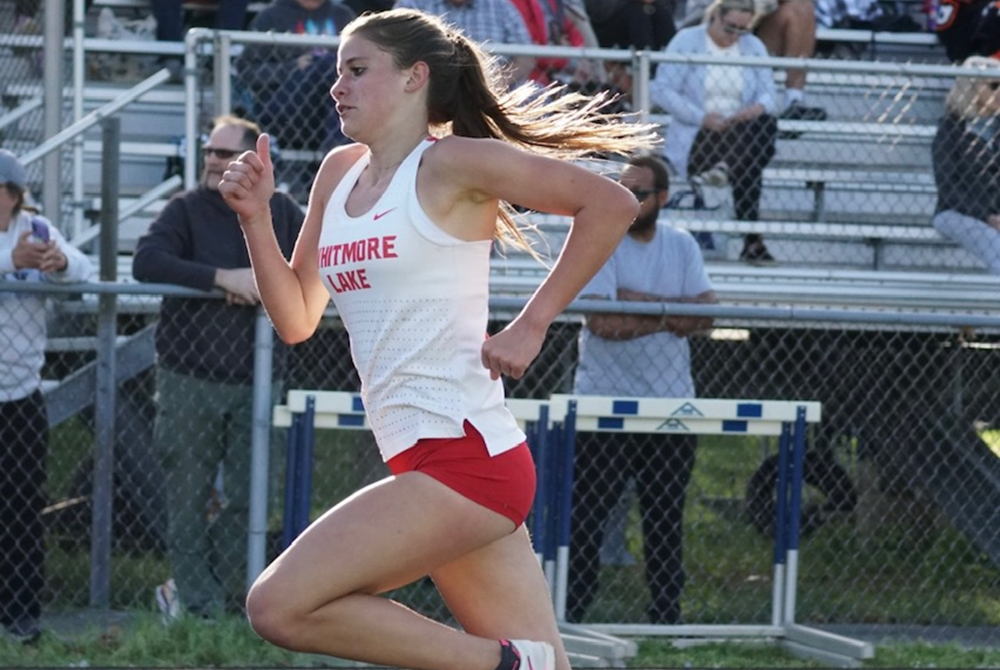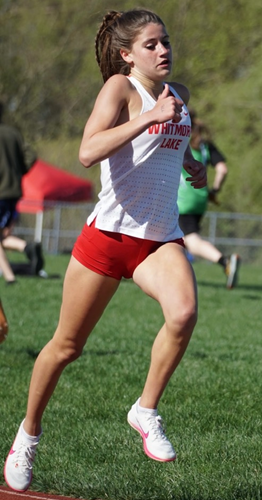
Casting Lines for Future Tournaments
August 12, 2016
By Jack Roberts
MHSAA Executive Director
The MHSAA is best known to the public for the tournaments it conducts to conclude the fall, winter and spring seasons each school year.
These tournaments, the first and largest program of the MHSAA, have survived the Vietnam War, the Korean conflict and two World Wars. They have survived the technology bubble, the housing collapse, the energy crisis and the Great Depression.
MHSAA tournaments existed at the dawn of aviation and at the time of our nation’s lunar landing. Popes, presidents and governors have changed and changed again and again, and MHSAA tournaments roll on year after year.
But the sense of tradition and permanence and inevitability of MHSAA tournaments doesn’t dissuade us from asking questions about our tournaments, even some of the most basic questions. Here are two.
Question #1
I have long been and will always be an advocate for a Ryder Cup format for the MHSAA Golf Finals, and a team tennis approach to the MHSAA Tennis Finals; but 90 years of tradition is hard to overcome. Might this be a more exciting format? Could it be co-ed? Could it reverse the decline in boys tennis participation, and increase girls golf participation? Wouldn’t it be fun to try?
Periodically, the International Olympic Committee requires each of the designated Olympic sports to defend its status, to state its case why the sport should remain a part of the Olympic program. Then, after a series or votes that retain one sport at a time, the IOC drops the sport that makes the weakest case. It does so to make room for one of the previously unlisted sports that makes the best case for inclusion.
This would appear to keep the existing Olympic sports on their toes, and to keep the Olympic movement fresh and reflective of modern trends in sports.
While I would not enjoy the controversy, I can see the potential for some positive results if the MHSAA were to invoke the same policy for determining the 14 tournaments it will provide for girls and the 14 for boys.
This might cause us to consider more deeply what a high school sport should look like, or at least what an MHSAA tournament sport should stand for.
On the one hand, we might be inclined to drop tournaments for those sports that involve mostly non-faculty coaches and non-school venues, or require cooperative programs to generate enough participants to support a team, or resort almost entirely to non-school funding, or cater to individuals more than teams.
Or perhaps this process would cause policymakers to forget traditional thinking and ask: “In this day and age, should we shake off traditional notions of sport and consider more where modern kids are coming from?” That might mean fewer team sports and more individual sports, more “extreme” sports like snowboarding and skateboarding, and more lifetime sports, meaning not just golf and tennis and running sports, but also fishing and even shooting sports.
Currently, MHSAA policy states that the MHSAA will consider sponsorship of a tournament series for any sport which 64 member schools conduct on an interscholastic basis as a result of action by the governing boards of those schools.
Should the only question be how many schools sponsor a sport, or must an activity also have certain qualities and/or avoid certain “defects?” What should an MHSAA tournament sport look like and stand for?
Question #2
Bristling from criticism that his association is a money-grabbing exploiter of children, my counterpart in another state said, “If we were running our programs just to make money, we would do very many things very differently.” I knew exactly what he meant.
Because we care about the health and welfare of students, because we mean what we say that the athletic program needs to maximize the ways it enhances the school experience while minimizing academic conflicts, and because we try to model our claim that no sport is a minor sport when it comes to its potential to teach young people life lessons, we operate our programs in ways that make promoters, marketers and business entrepreneurs laugh, cry or cringe.
If money were the only object, we would seed and select sites to assure the teams that attracted the most spectators had the best chance to advance in our tournaments, regardless of the travel for any team or its fan base. If money were the only object, we would never schedule two tournaments to overlap and compete for public attention, much less tolerate three or four overlapping events. If money were the only object, we would allow signage like NASCAR events and promotions like minor league baseball games.
Those approaches to event sponsorship may not be all wrong; they’re just not all right for us. And we will live with the consequences of our belief system.
During a typical school year, more than 20 percent of the MHSAA’s 2,097 District, Regional and Final tournaments lose money. Not a single site in golf, skiing or tennis makes a single penny. In no sport did every District, Regional and Final site have revenue in excess of direct expenses.
In fact, in only three sports – boys and girls basketball and football – is revenue so much greater than direct expenses overall that it helps to pay for all the other tournaments in which the MHSAA invests.
That’s right: invests. When we present our budget to our board, we talk about the MHSAA’s investment in providing tournament opportunities in all those sports and all those places that cannot sustain the cost of those events on their own. How much is this investment worth to students, schools and society?
These two are core questions that require our focus far in advance of talk about scheduling, site selection, seeding and the myriad matters that too often hijack our time and attention.

Freshman Rewriting Whitmore Lake Record Book, Eyeing More Finals Success
By
Doug Donnelly
Special for MHSAA.com
May 21, 2024
The COVID-19 pandemic was a different, often difficult time for student athletes.
 It also gave aspiring young athletes a little free time. Whitmore Lake’s Kaylie Livingston didn’t waste it.
It also gave aspiring young athletes a little free time. Whitmore Lake’s Kaylie Livingston didn’t waste it.
Livingston, then in grade school, got serious about running – and it grew into a passion.
In the fall, the Whitmore Lake freshman finished second at the Lower Peninsula Division 4 Cross Country Final. She’s gearing up for the LPD4 track & field championship meet June 1 and enjoyed a remarkable day just over a week ago at the East Jackson Dome Classic when she set school records in the 1,600, 3,200 and as part of the 3,200 relay – the three longest races – all in the same day.
“She has the motor to do both (the 1,600 and 3,200),” said her coach and father, Casey Livingston. “She was really focused that day and posted a couple of really good times.”
Livingston won the 3,200 with a time of 10:46.29. She was second in the 1,600 with a time of 5:03.24. The 3,200 relay team finished second with a school record 9:43.57, which has since been lowered.
“It was a normal day for me running those events,” Kaylie said. “It’s a lot of fun to run as many races and run as fast as I can. I had a pretty good day.”
Livingston started running in elementary school. Her dad was the head cross country coach at Whitmore Lake, which was then a member of the Tri-County Conference. After the regular TCC meets had finished, the league held an “open” race where anyone could run. Most times, Kaylie would join the fun.
 “That’s really the first time she ran competitively, if you can even call it competitive,” Casey Livingston said. “She really enjoyed running, especially with the older kids. She liked that.”
“That’s really the first time she ran competitively, if you can even call it competitive,” Casey Livingston said. “She really enjoyed running, especially with the older kids. She liked that.”
During the pandemic, Livingston said the family began running together.
“When COVID hit and we were shut down, we were outside trying to get exercise,” he said. “Obviously, track season was canceled that spring, but our league did some COVID games, where you would do different events and you would record it. She did that.
“Then, that summer, we started our summer training, and she would have been in fifth or sixth grade and started running our workouts. She kind of just took off with it.”
And then some.
“She’s been running times that had rivaled our records when she was in middle school,” added Livingston, who has coached basketball, cross country and track & field at Whitmore Lake. “I remember her saying, ‘I can’t wait to be a freshman so I can set some of those records.’”
This past weekend at her team’s Regional, Kaylie qualified for the Lower Peninsula Division 4 Finals in four events – the 1,600, 3,200 and as part of the 1,600 and 3,200 relays. She was the Regional champion in three of those races. Overall this season, she finished outside first place only five times – with four runner-up finishes and a third place in a relay.
She said those records have remained on her mind.
“I beat them by a pretty decent amount,” she said. “It was definitely one of the goals for the track season.”
The three-sport athlete (cross country, basketball, and track) enjoys track & field but says cross country is her favorite sport. She runs anywhere from 30 to 40 miles a week. Her individual runner-up finish in cross country helped Whitmore Lake win the LPD4 team title, and she has similar aspirations for her track & field team in two weeks.
“My goals are to continue to grow and always get faster,” she said. “Hopefully we could come in with a state title too.”
 Doug Donnelly has served as a sports and news reporter and city editor over 25 years, writing for the Daily Chief-Union in Upper Sandusky, Ohio from 1992-1995, the Monroe Evening News from 1995-2012 and the Adrian Daily Telegram since 2013. He's also written a book on high school basketball in Monroe County and compiles record books for various schools in southeast Michigan. E-mail him at [email protected] with story ideas for Jackson, Washtenaw, Hillsdale, Lenawee and Monroe counties.
Doug Donnelly has served as a sports and news reporter and city editor over 25 years, writing for the Daily Chief-Union in Upper Sandusky, Ohio from 1992-1995, the Monroe Evening News from 1995-2012 and the Adrian Daily Telegram since 2013. He's also written a book on high school basketball in Monroe County and compiles record books for various schools in southeast Michigan. E-mail him at [email protected] with story ideas for Jackson, Washtenaw, Hillsdale, Lenawee and Monroe counties.
PHOTOS (Top) Kaylie Livingston runs one of her races this season as a freshman for Whitmore Lake. (Middle) Livingston has qualified for the MHSAA Finals in two individual races and two relays. (Photos courtesy of the Whitmore Lake athletic department.)

